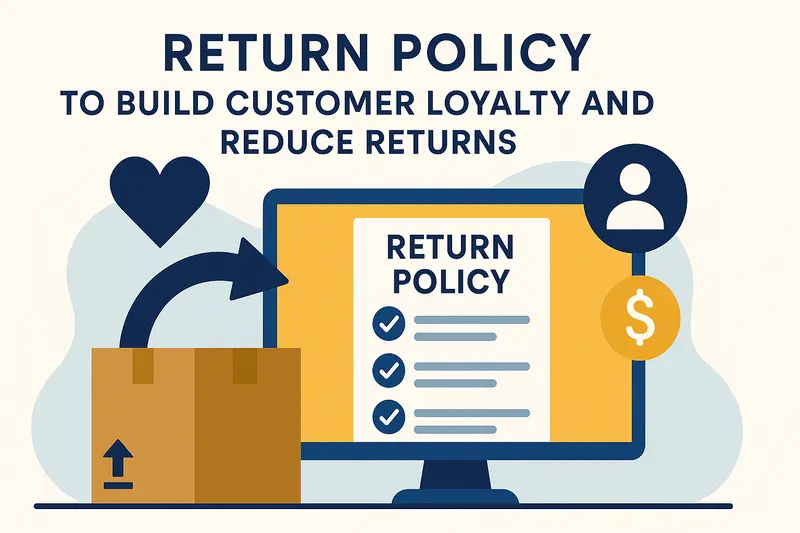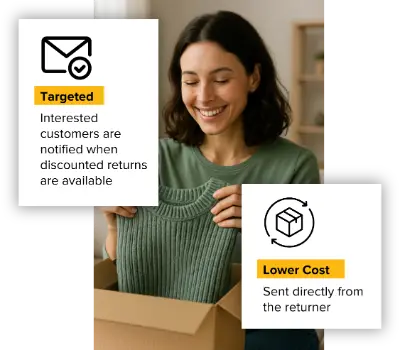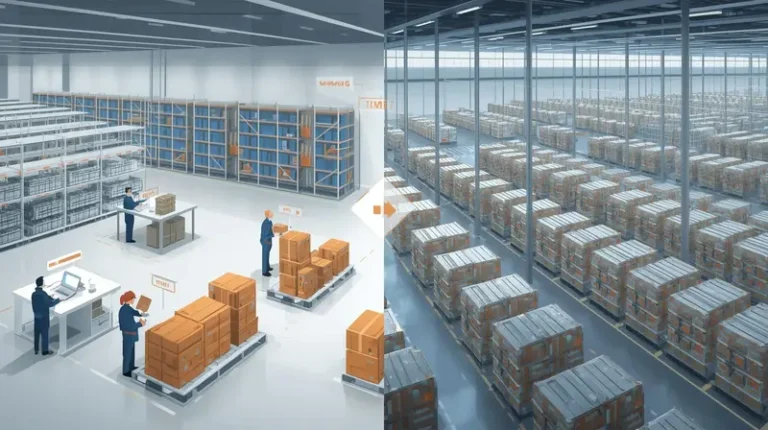Crafting a Return Policy that Drives Customer Loyalty and Reduces Returns

Last updated on October 03, 2025

In this article
 7 minutes
7 minutes
- How to Create a Returns Policy That Benefits Both Your Customers and Your Business
- Balancing Generosity and Profitability in Your Returns Policy
- Monitoring and Improving Your Returns Policy Based on Customer Feedback
- Final Thoughts: Why Your Returns Policy Should Be a Key Component of Your Loyalty Strategy
Let’s talk about ecommerce returns policies. You might be thinking, “What’s the big deal? It’s just a formality, right?” Well, no; your returns policy can either make or break your relationship with your customers. If done right, it builds trust through transparency. If done wrong, it can prevent new customers from buying from you, or worse, it can send your loyal customers running for the hills.
A clear, customer-friendly returns policy isn’t just some legal jargon to throw on your website for show. It’s a vital piece of your customer growth and retention strategy. When your customers feel confident in your return process, they’re much more likely to hit the “buy” button. Why? Because they know that if something goes wrong, they’re covered. No one likes the feeling of getting stuck with a purchase they regret, so a transparent returns policy builds trust. And trust is the foundation of your relationship with your customer.
How to Create a Returns Policy That Benefits Both Your Customers and Your Business
Let’s dive into the how: how do you create a returns policy that strikes a perfect balance between establishing confidence and trust in your brand, and giving away the farm? First, keep it simple. Your returns policy should be straightforward enough that anyone can understand it in a few seconds. Don’t hide the details. Don’t make it overly complex with all kinds of ifs, thens, and buts. Customers don’t want to dig through pages of fine print to figure out how to return something. No one has time for that, especially when they’re annoyed about needing to send an item back.
Make Returns Profitable, Yes!
Cut shipping and processing costs by 70% with our patented peer-to-peer returns solution. 4x faster than traditional returns.
See How It WorksNext, let’s talk about timing. You need to give your customers enough time to make up their minds. A reasonable return window (30 days? 45 days?) is fair, but don’t go overboard. A year to return a pair of socks might sound generous, but it’s a logistical nightmare. Somewhere between “24 hours” and “whenever you feel like it” is the sweet spot. Make sure your policy includes crystal clear instructions: what’s returnable, how to return it, and whether it’s free or not (with the respective details).
Here’s an example: I bought a pair of shoes online. They were great in theory: super stylish. But, when I tried them on, they made me look like I was auditioning for a ’90s boy band. Not the vibe I was going for. Thankfully, the return policy was clear and painless. It wasn’t complicated, it didn’t require a dozen emails back and forth, and I got my refund promptly. That’s the type of experience you want to offer: easy, fast, and no run-around. A simple, straightforward policy will make your customers feel like you’ll take care of them if it comes down to it, and that’s important for growing organic brand affinity.
Balancing Generosity and Profitability in Your Returns Policy
Now, here’s the tricky part: balancing generosity and profitability. You want to be kind and flexible, but you also need to make sure your returns policy keeps the financials manageable. Offering free returns on every single order sounds nice, but in reality, not all businesses can afford it, and not all products warrant it.
Here’s the trick: limit what’s eligible for free returns. For example, offer free returns only on high-ticket items or for orders above a certain value. For smaller items, you could charge a small return fee or ask customers to cover return shipping costs. And if your customers are loyal and happy, they’ll be more likely to accept small fees for the service you’re offering.
Other options include a product pricing strategy that increases prices and order value across the board so there’s some extra room to absorb the cost of returns as a whole, rather than treating them on a one-by-one basis. Or consider incentivizing customers to keep items by offering discounts on future purchases. And if you really want to get creative, offer store credit instead of cash refunds for certain returns. This retains the revenue while still letting the customer pick something else out, and they don’t feel like they’re losing out on their original purchase.
Here’s a real-world analogy: I bought an inexpensive phone case from a popular online retailer, but I wasn’t thrilled with it. It was cheaply made, so I wanted to return it. I wasn’t annoyed by the small return fee because the company had been transparent about it upfront. It didn’t feel like they were trying to sneak anything past me. And, honestly, the small fee was worth it to me because they took care of me quickly and offered amazing customer service during the entire process. They were fair with me, so I was fair with them, and that turned me into a repeat customer. You can do the same: offer free returns where it counts, and keep your bottom line in check elsewhere.
Monitoring and Improving Your Returns Policy Based on Customer Feedback
So, you’ve got your returns policy in place. Great. Now what? Keep an eye on it! Your returns policy isn’t a one-and-done deal. The best policies evolve, just like your business does. And the best way to improve? Customer feedback. This is where the real magic happens.
Check your return data. Why are customers returning items? Is it because of sizing issues, poor product descriptions, or something else? This data gives you the power to refine things to prevent future returns. Say you run an apparel shop, and a certain jacket is frequently returned for being too small. Then maybe you need a better size guide. Or, if customers consistently say an item’s color isn’t what they expected, perhaps you need better product photos and/or descriptions.
Just keep in mind that your returns policy should be a living, breathing document that adapts to the changing needs of your customers and your business. Regularly reviewing feedback and adjusting your policy accordingly will help you stay in sync with customer expectations.
Convert Returns Into New Sales and Profits
Our peer-to-peer returns system instantly resells returned items—no warehouse processing, and get paid before you refund.
I'm Interested in Peer-to-Peer ReturnsFinal Thoughts: Why Your Returns Policy Should Be a Key Component of Your Loyalty Strategy
When you’re building out your returns policy, don’t just slap something together and call it a day. It’s a critical part of your customer loyalty strategy and should be afforded the attention that it deserves. Trust me, if your returns policy is super easy, clear, and fair, it can be the key to a relationship with your customers that keeps them coming back for more. When people know they won’t get stuck with a dud product, they’re way more likely to hit that “Buy” button now, and again in the future.
Remember, when it comes to your returns policy, you’re not just fixing post-purchase problems, you’re building loyalty. Think about it: nobody likes jumping through hoops to return something. So, if you can make it easy and communicate that from the start, they’ll remember that. Happy customers are loyal customers. And loyal customers are how you grow a successful business. Here’s the recap: Keep it simple, clear, and fair. Don’t overcomplicate it. Offer free returns when it makes sense, and pay attention to your data. You’d be surprised at how much info you can get from customer feedback; use it to improve your policy, but also use it to improve your products and merchandising to reduce returns in the first place. Over time, it’ll become more than just a “customer service thing” that online shoppers expect. It’ll actually help attract new customers and keep them around. And isn’t that what we’re all after?

Turn Returns Into New Revenue





